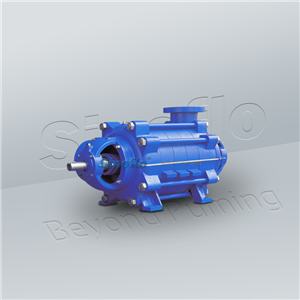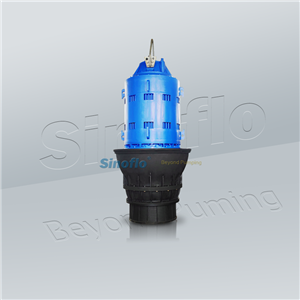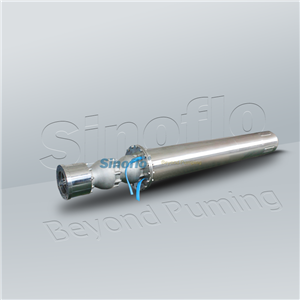Pump Selection Principle, Basis and Specific Operation Mode
Pump Selection Principles
The selected pump type and performance must meet the requirements of flow, head, pressure, temperature, cavitation, suction head and other parameters.
Medium characteristics must be considered:
For pumps that transport flammable, explosive, toxic or valuable media, reliable shaft sealed or non-leakage pumps are required, such as magnetic pump, diaphragm pump, canned motor pump;
For pumps that transport corrosive media, the wet parts are required to use corrosion-resistant materials, such as stainless-steel corrosion-resistant pumps, engineering plastic magnetic pumps.
For pumps that transport liquid containing solid particles, the wet parts should be made of wear-resistant materials. If necessary, the shaft seal should be flushed with clean liquid.
High mechanical reliability, low noise and small vibration
Economically, the total cost of equipment, operation, maintenance and management must be taken into account.
The centrifugal pump has the characteristics of high speed, small volume, light weight, high efficiency, large flow rate, simple structure, no infusion pulse, stable performance, easy operation and maintenance.
Therefore, except for the following situations, centrifugal pumps should be used whenever possible:
When there are measurement requirements, choose a metering pump.
When there are not suitable centrifugal pumps for high head and small flow requirements, reciprocating pumps or vortex pumps can be used if cavitation requirements are not high.
When require low head and large flow, axial flow pump and mixed flow pump can be selected.
When the viscosity of the medium is large (greater than 650~1000mm2/s), rotor pump or reciprocating pump (such as gear pump, screw pump) can be considered.
When the medium contains 75% gas, if required flow rate is small and viscosity is less than 37.4mm2/s, vortex pump can be selected.
For occasions with frequent starting or inconvenient filling pumps, self-priming pumps should be selected, such as self-priming centrifugal pumps, self-priming vortex pumps, and pneumatic (electric) diaphragm pumps.
Fundamental Basis of Pump Selection
Pump selection should be based on the process flow, water supply and drainage requirements, and consideration from five aspects, namely the liquid delivery volume, head, liquid properties, pipeline layout, and operating conditions.
Flow is one of the important performance data of pump selection, it is directly related to the production capacity and conveying capacity of the entire device. For example, in the process design institute designing, the normal, minimum, and maximum flow rates of the pump can be calculated. When selecting a pump, take the maximum flow as the basis. When there is no maximum flow, usually 1.1 times of the normal flow can be taken as the maximum flow.
The head required by the device system is another important performance data for pump selection. Generally, the head is selected by enlarging the 5% -10% margin.
Liquid properties, including the name of the liquid medium, physical properties, chemical properties and other properties. The physical properties include temperature, density, viscosity, solid particle diameter and gas content in the medium. These will influence on system head, NPSHa calculation and suitable pump type; Chemical properties, mainly refers to the chemical corrosivity and toxicity of the liquid medium, which is an important basis for the selection of pump materials and shaft seal type.
The pipeline layout conditions of the device system mainly refer to some data such as liquid delivery height, liquid delivery distance, liquid delivery direction, minimum liquid level on the suction side, and maximum liquid level on the discharge side, as well as pipe specifications and their lengths, materials, pipe specifications, quantity etc. All these conditions should be considered in order to perform system head calculation and cavitation allowance check.
Specific Operation of Pump Selection
According to the pump selection principles and basic conditions, the specific operations are as follows:
According to the arrangement of the device, terrain conditions, water level conditions, and operating conditions, determine the pump mounting positions, such as horizontal, vertical and other pump types (pipeline, submersible, non-blocking, self-priming, gear, etc.).
According to the liquid medium nature, determine whether select fresh water pump, hot water pump or oil pump, chemical pump, corrosion-resistant pump or slurry pump, or non-blocking pump.
Pumps installed in explosion areas should use corresponding explosion-proof motors according to related explosion grade.
Select single-suction pump or double-suction pump according to actual flow rate requirement; select single-stage pump or multi-stage pump, high-speed pump or low-speed pump as per actual required pump head; Due to the efficiency of the multi-stage pump is lower than that of the single-stage pump, if single-stage and multi-stage pumps can both be used, the single-stage pumps should be given the priority.
Determine the specific model of the pump
After determining what types of pumps to choose, you can use the maximum flow rate (in the absence of the maximum flow rate, 1.1 times the normal flow rate is usually used as the maximum flow rate), and expand the head 5% -10% margin expansion as two main parameters to determine the specific pump model in spectrum or characteristic curve. Detailed operation is as follows:
Use the pump characteristic curve to find the required flow value on the abscissa and find the required head value on the ordinate. From the place of these two values, draw the vertical or horizontal line up and to the right respectively. If the Intersection just lies in the curve, then this is the right pump to choose, but this ideal situation is generally rare, and usually there will have the following two situations:
-First situation: if the intersection point is above the characteristic curve, which means that the flow meets the requirements, but the head is not enough. At this time, if the heads are similar, or the difference is about 5%, the pump is still optional. While if there is much difference of the head, then select pump with higher head, or try to reduce the pipeline resistance loss.
-Second situation: if the intersection point is below the characteristic curve, also it’s within the fan trapezoidal range of the pump characteristic curve, this model can be initially determined. The impeller diameter is determined based on how much the head is different from the required one. If the head difference is small, no need cut. While if the head difference is large, cut the impeller diameter according to the required Q, H and cutting formula. If the intersection point does not fall within the fan-shaped trapezoidal range, choose a smaller head pump. When selecting a pump, sometimes it is necessary to consider the production process requirements and select different shapes of Q-H characteristic curves.
After the pump model is determined, the pump with the pumping medium similar to water in the physical and chemical needs to be verified by referring to the relevant product catalog according to the model performance table or performance curve to see if the normal operating point falls within pump priority working area, whether NPSHa is larger than NPSHr. The geometric installation height can also be adjusted in reverse as per NPSHr.
For liquid pumps with a viscosity more than 20mm2/s (or density more than 1000kg/m3), the experimental characteristic curve for pump under water conditions must be converted into the performance curve of viscosity (or the density) for the pumping liquid, especially the suction performance and Input power need careful calculation or check
Determine the number of pumps and standby rate:
Normally, if only one large pump can meet the performance requirement, it will no need two small pumps from the energy-saving point of view. Because one large pump is equivalent to two small pumps working in parallel (referring to the same head and flow), and the efficiency of the large pump is higher than that of the small pump. The following cases need to be considered two pumps in parallel cooperation:
-Large capacity which one pump is unable to meet the requirement.
-For large pumps that require a 50% standby rate, two smaller pumps can be replaceable to work. Two pumps standby (total 3 pumps).
-For some large pumps, the pumps with 70% flow requirement can be selected for parallel operation, without using a backup pump. When one pump is overhauled, the other pump still bears 70% of the production.
-For pumps that need to run continuously for 24 hours, three pumps are required: one running, one for standby, and one repairing;
Generally, customers can submit their "basic conditions for pump selection", and Sinoflo will help to select or recommend better pump products. But if the design institute has determined the model of the pump when designing the equipment, then this determined pump model will be regarded as the confirmed one.




